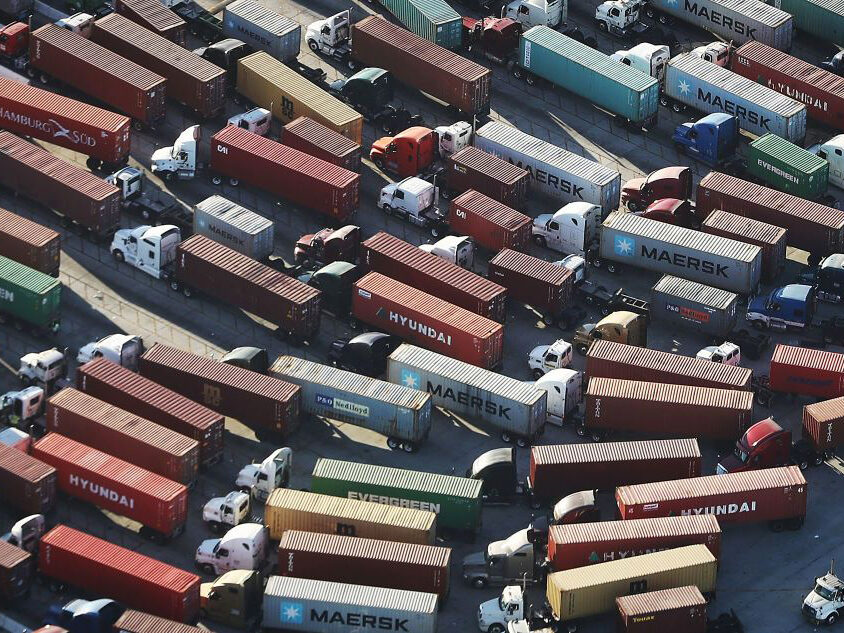
Proactivity and reactivity aren’t opposing schools of thought in supply chain risk management. They’re distinct parts of a complete, holistic strategy.
Historically, reactivity and proactivity in the supply chain have been discussed as if they’re opposing forces. For a long time now, thought leaders have professed the need to take a proactive approach to supply chain risk, and get better at anticipating disruptive events before they happen, in order to better mitigate their impacts.
And for good reason. There really is no better way to safeguard your operations, supply chain or organization against disruptive events than to prepare for them before they strike. But, that perspective overlooks one critical point — there will always be a number of events that nobody sees coming.
In late 2019, no one could have predicted what was about to unfold. But COVID-19 turned out to be the ultimate testing ground for response readiness. It illustrated, in painful detail, that despite our best efforts to prepare, proactivity alone can only protect us so much.
Instead, supply chain leaders must be both proactive and reactive at the same time — preparing for the things they realistically can prepare for, while also being ready to react and make changes to plans on the fly.
Embedding Proactivity
Becoming truly proactive in your efforts to mitigate supply chain risk has only become practically possible in recent years. The rise of intuitive data-driven technologies has given us incredible new capabilities to dive into data, identify trends, and track both drivers and indicators of change.
Practically, today’s procurement professionals have everything they need to implement comprehensive, coherent and cost-effective risk monitoring, measurement and mitigation programs within their organizations. Programs that not only monitor the broader supply chain — identifying issues, threats and opportunities — but also the more immediate category and supplier environments.
Equipped with those tools, procurement and supply chain operations teams can focus on delivering the five foundational elements of a proactive supply chain risk management strategy:
- Determining the right risk focus areas including which suppliers to monitor most closely, and key categories that are either most exposed to risk, or most critical to your operations.
- Acquiring and bringing together the right data about those categories and suppliers, to help you learn more about them.
- Converting that data into insights, organizing and understanding how each data point could influence relevant micro and macro risk categories.
- Sharing and disseminating insights to ensure the right people are equipped with the information they need to make the right decisions at the right time.
- Driving the right actions and ensuring that people at all levels are empowered to convert insights into actions proactively.
Be Ready to Adapt
A proactive approach to supply chain risk management can help you mitigate threats, ensure business continuity, and prevent your organization from being blindsided by unforeseen crisis events. But, it can’t fully mitigate their impact. That’s where reactivity comes in.
No matter how strong your proactive risk strategies are, you must also be ready to adapt as conditions change. Reactive actions need to be fast, to help mitigate the impacts of risk and crisis events — but they must also be made strategically.
When a major crisis event happens, it’s easy to take sweeping, knee-jerk reactive actions, like switching to new suppliers to ensure short-term continuity. But, often, those actions don’t support your overall procurement or business strategy, and can even end up being more damaging to your organization than the crisis itself.
The key to reacting successfully is balancing speed with strategy. You want to implement changes quickly, but that can’t come at the expense of your strategic priorities. Every choice must help you adapt to today’s conditions, while keeping you on the path to a better, more efficient tomorrow.
Practically, that means taking 10 key steps to ensure your reactive actions will ultimately yield the right results:
- Assemble the right cross-functional team: A strong response requires balanced perspectives, so it’s important to assemble a team that’s both comprehensive and cross-functional.
- Understand the nature of the crisis: Before you can react to something appropriately, you need to know what you’re up against. The initial impact you feel may not be reflective of the overall issue, so work to fully understand the situation before making any decisions.
- Frame issues from a value chain perspective: It’s important to consider every potential impact of a crisis — not just the biggest ones, or the ones happening right now. Carefully map the event’s impact on sourcing, manufacturing, and distribution to get a complete picture of the risk you’re exposed to.
- Go broad, and go deep: Ask as many questions as possible about the projected impacts of the crisis, and look not only at the immediate disruptive impacts, but also at each knock-on effect they could have.
- Mobilise the right data: Data is the fuel needed to make the right decisions, and so accessing and analysing the right data is essential to optimal crisis response. You’ll need access to both qualitative and quantitative data, helping you understand what’s happening, and the broader impact it’s having.
- Define critical goals: In a crisis situation, many of your goals will be clear — like restoring supply of a critical product, or recommencing distribution in an impacted region. Nonetheless, it’s still important to define your goals, to help ensure all decisions push you towards achieving them.
- Move quickly: With your goals set, everyone needs to understand how they can immediately contribute to them, and where others are dependent on their actions.
- Monitor constantly: Continue to track developments across suppliers, markets and categories, and keep a close eye on how your actions are improving key procurement and value chain KPIs.
- Communicate, communicate, communicate: Response is a whole team effort, so it’s critical to ensure that as teams get on with their work, communication remains open and flexible, so further changes can be made as required.
- Be mindful of first principles: All decisions and actions should ultimately be guided by a focus on the customer, and on supplier relationships. Link every decision back to customer and partner outcomes, as well as the goals you’ve set.
Reactivity and proactivity aren’t conflicting schools of thought in supply chain risk management. They’re distinct parts of a comprehensive risk management strategy, and equally critical during times of crisis and disruption.
Omer Abdullah is cofounder and managing director of The Smart Cube.







